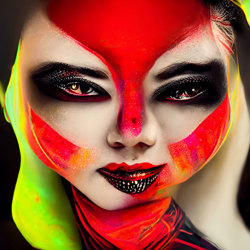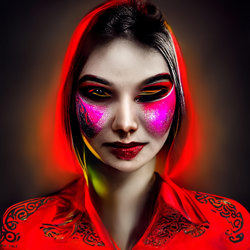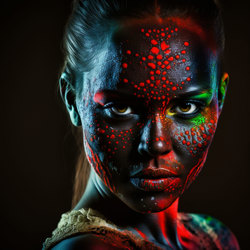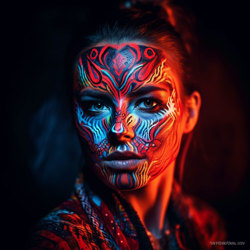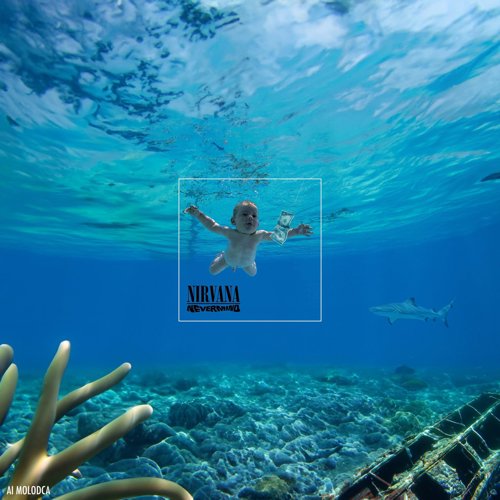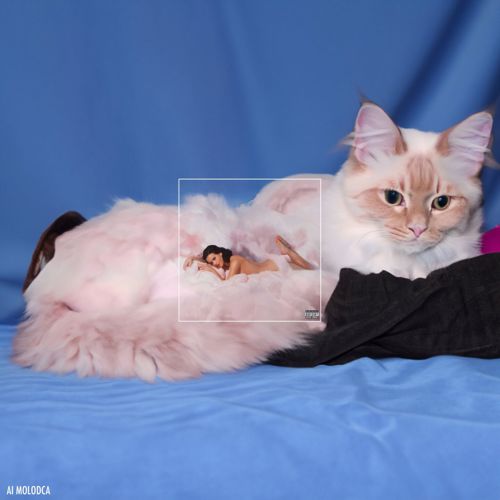Unleashing Creativity: Exploring the AI revolution in visual communication
From deep learning to deepfakes, we are finally witnessing AI’s incredible potential first-hand. It’s everywhere, and it’s evolving by the minute. We’ve reached an incredibly exciting turning point where creativity, innovation and productivity are about to go through the roof. We’re diving into a new era that’s going to empower creatives, fundamentally transforming the way we convey messages and craft captivating visual experiences for brands.
So how will AI reshape visual communication? Here are a few thoughts.
The new image generation
Speak to most designers and they will have at least tinkered with text-to-image generative AI the likes of DALL-E, Midjourney or Stable Diffusion. These deep learning models bridge the gap between language and vision, where the only limitations are your imagination.
Amongst others, I’ve been experimenting with Midjourney. They describe themselves as, ‘an independent research lab exploring new mediums of thought and expanding the imaginative powers of the human species’! From creating my own unexpected nightmare fuel with their V1 beta back in 2022, to seeing what V5.2 can produce, the advances are incredible.
Prompt: a woman with striking graphic fluorescent multi-coloured paint designs on her face, neo-deco style, dark background, vibrant, striking, emulate a RED Monstro 8KVV, high key lighting in red, HDR, --ar 1:1 --q 1 {--v 1 --v 2 --v 4 --v 5}
With its ability to interpret cameras and lens types, aperture settings, perspective, lighting, texturing, grading and composition from text prompts, you can guarantee photorealistic cinema-quality artwork. As easy as it is to quickly get results, the real art is in the prompting. A well-crafted and detailed prompt reduces ambiguity and speeds you towards outstanding results. From having a concept in my mind, to getting it into a presentable form for clients, this jumps the process to lightspeed. No more hours of hunting for images and compositing simply to make an ad mock-up, storyboard, or social concept presentable.
I should say, there’s definitely an element of The Infinite Monkey Theorem to prompting. Whilst iterative changes and limitless regenerations get you closer to what you need, there’s a fair bit of chance to it too. Pull the lever on the one-armed bandit and keep your fingers crossed for three photo-realistic cherries!
For me, the most significant impact of text-to-image generation models is their transformation of the exploration phase of design. They are enabling designers to experiment with different design directions, test variations, explore unconventional ideas and quickly generate visual representations of their concepts.
Image ManipulAItion
While upstart image generation tools have stormed our desktops, the king of image manipulation remains Adobe Photoshop. Whether it’s removing an item from a shot, re-colouring, re-positioning, or re-grading, there is always a bit of ‘re-something’ needed with sourced (or AI-generated) imagery.
The latest Beta release of Photoshop has been supercharged through Firefly, Adobe’s much anticipated ‘creative generative AI engine’. It’s rapidly filtering into their full range of Creative Cloud products and has brought Photoshop firmly into the AI conversation with a host of impressive new tools. Most talked about is Generative Fill. In Adobe’s words, it’s “a series of AI-powered capabilities that let you add, extend and remove content from images or create them from scratch”. Or there’s the catchier, “Dream it, type it, see it” which really does capture the speed and ease of it.
Plus… you really need to see it in action to believe it!
Its most impressive capability is to imagine more beyond the boundaries of an image. This has quickly become the stuff of memes with iconic album covers (literally) being given a wider context. Whole faces can be generated from as little as an eye and a nose. You can customise model shots to change their clothing, facial expressions, switch backgrounds and more, all using text prompts. Like text-to-image generators, you can also generate images from a blank canvas. This incredible new AI-driven capability will jet propel productivity for designers making some of the most labour-intensive workflows just a matter of clicks. It has taken the application beyond image manipulation into image generation.
And that’s just the Beta!
All of this will certainly help businesses save time and money with faster, more efficient creation of content. It's also bound to result in a more diverse range of untrained users adopting the app. Designers will be delighted to have new toys but longer-term, what will the impact be on jobs and the perceived value of creative craft?
The knowledge of all fonts
While text-to-image has jumped to the fore, it’s by no means the only tool to emerge. AI can be used to automate the more mundane and laborious aspects of type handling, from the visual adjustments of letter spacing to automated text layout. Where it gets sexier is when AI can be used to experiment and completely reimagine typography. Gianpaolo Tucci’s aesthetics_imperfections project uses Midjourney to blend letterforms with organic forms. The outcomes are captivating, free from the constraints of human norms, giving birth to an entirely fresh reality. In graphic design, type handling is a revered craft so, to see things go ‘sans-rules’ is inspiring.
Concept Catalyst
Ok. So, I’ve jumped the gun a bit. I’ve started with all the fun visual stuff that you might be more familiar with when really, it’s the BIG IDEA that should come first. To me, graphic design is all about problem-solving. Without a clear objective, research, and strategic insight, it’s just pretty pictures. And anybody can text prompt those now! So how can AI assist at this point in the process?
I’ve been experimenting with ChatGPT and Google Bard and they have quickly become part of my workflow. As you’d expect, they can point you towards focussed research material, but with the added value of summarised findings. You can even ask them for a range of perspectives on any given topic.
For me, the design process begins through language. Being able to distil a core idea down into something simple and thought-provoking. This is what inspires the visual phase of exploration. Being able to use these chat AI’s gives me a conversational thesaurus come sparring partner. They give me the peace of mind that I’ve explored and exhausted all potential creative pathways at the early concept stage.
Despite their developmental flaws, Chat AIs are revolutionising concepting processes and content creation. ChatGPT has even entered the advertising world with the recent McDonald’s v Burger King AI stand-off, although this might be more interesting to the industry rather than to the consumer. Since the time of writing, several others have also joined the spat!
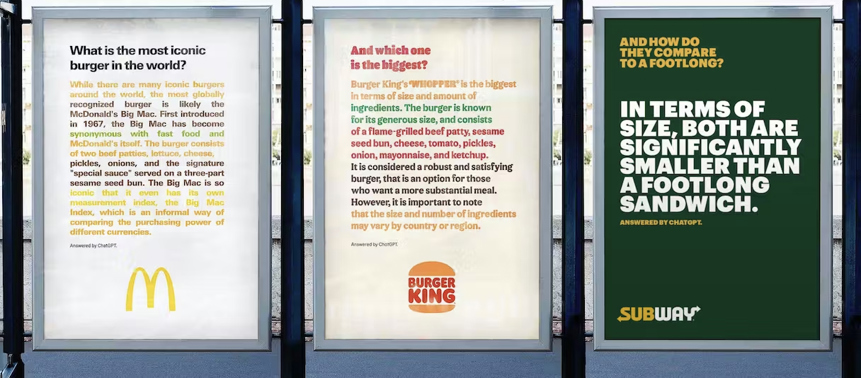
Motion graphics and 3D frontiers
AI is also paving the way for brand storytelling to evolve through innovative 3D and motion content. Every day, new AI-powered tools launch to empower motion designers to create more realistic, immersive, and interactive experiences. It’s this aspect of AI that excites me the most.
Runway’s suite of tools gives an indication of what lies ahead. ‘Video-to-video’ allows you to upload a guide video to then apply new stylised treatments. The results can be mixed but even the unexpected results are interesting. Gen-2 also brings ‘Text-to-Video’ into the suite which opens a whole new arena.
Source: mhaerlin
Deepmotion.com’s AI-powered motion capture reconstructs full-body motion, including face and hand tracking, from 2D video to create 3D animations. This drastically reduces the time and cost of conventional production processes and has a wide range of applications from animation to gaming, augmented/virtual reality, and more.
Source: Skybox
Another exciting development in the 3D space comes from Blockade Labs with Skybox AI. In their words, it’s “The ultimate AI-powered solution for generating incredible 360º skybox experiences from text prompts”. Its interpretation of text prompts and basic doodling allows you to create rich 3D spaces for use in immersive VR, XR or games in a matter of seconds. I’m interested to see how this technology could export into other 3D packages, potentially to develop immersive content for video or social media. Imagine rich backdrops for interactive product exploration.
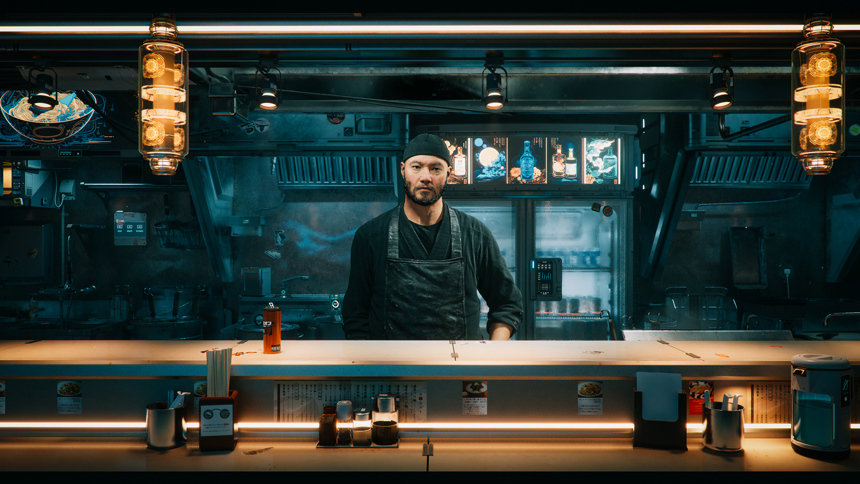
Gaming has been a driving force in the convergence of creativity and technology, leading to many new advancements in both fields. The latest comes from NVIDIA who have announced their Avatar Cloud Engine (ACE). It brings intelligence to non-player characters (NPCs), allowing for customised speech, conversation, and animation in real time. The impact of this could go well beyond gaming and become a game changer for brands through the personalisation of digital ads, social media content and more.
A leap further still is the data-driven personalisation of video and motion graphics, making each viewer’s experience more engaging and relevant. AI will no doubt be used to dynamically adapt advertising through visual elements, messages, or narratives based on individual user profiles.
So, what happened to authenticity?
Who knows? The Pope maybe? When that image of him in an ankle-length winter white puffer went viral, writer Dean Kissick tweeted, “In the next few years there’s going to be a sweeping assault on reality, and meaning (i.e. lots of fake images, videos, recordings and texts that are also meaningless, that serve no agenda), and it’s going to be very deranged and disorientating, but also exciting.” Strong words, which I agree with, but I do question whether we’ve reached that point already.
With the growing need for content, AI trickery will continue to raise a host of questions around ethics, disinformation, and intellectual property. For example, prompting in the style of [artist’s name] to scrape the internet and mimic an artist's work without their permission. With the tools available to anyone it feels a bit like open season.
Reassurance comes from Adobe who has made the bold pledge that it will be the first “commercially safe” AI image generator for business. They are even offering IP indemnification for any legal issues arising from its use. This is because they have trained their AI using their own stock images, public domain content and other openly licensed or non-copyright material. Peace of mind for any designer and more importantly, freedom to create responsibly.
Conclusion
So here we stand on the cliff edge of a creative revolution, but what does "change" mean? Personally, I’m as excited as I am wary. It’s the pace of change as much as the power of what is changing that surprises and scares in equal measure.
There are obvious advantages to the technology for creatives, however, its impact could also lead to a decrease in jobs as well as the diversity of voices within the industry. Will businesses decide that AI is a magic bullet and create their own content, or even branding? If everyone is using the same tool to generate ideas, could this lead to a homogenisation of creative work and a devaluation of creative expertise?
Shantanu Narayen, Chair and Chief Executive Officer of Adobe is quoted in the Drum, explaining, “Creativity is the new productivity. Generative AI also represents this incredible new technology frontier… this is going to revolutionize technology as we know it”. As much as I agree with the sentiment, his vision of creativity being ‘the new productivity’ feels, to me, like we might be losing something along the way.
That said, I’m excited about the revolutionary potential for higher production levels in creative work. Richer, more immersive, and more personalised experiences will help transform our brand and digital marketing creative. For me, the most important (and irreplaceable) aspect of design is invention through problem-solving. I’m excited about the ways in which AI will allow me to transfer my skills and thinking to new territories and the new ways in which I can bring ‘the big idea’ to life.
I recently found a quote by David Sheldon-Hicks, Founder at Territory Studio which captured things pretty perfectly.
“Change is part of our world, and we have to understand it and lean into the shift. When photography came into existence, artists moved from painting reality and impressionism was born”.
Creativity is important because it allows us to solve problems, to come up with new ideas, and to express ourselves in unique and meaningful ways. It can help us to find solutions to many of the challenges we see in the world. My hope is that AI will help to bring about a refocusing on the importance of creativity. Let's reinstate its value, reassert its importance, and rekindle our passion for it.
Read more of our insights
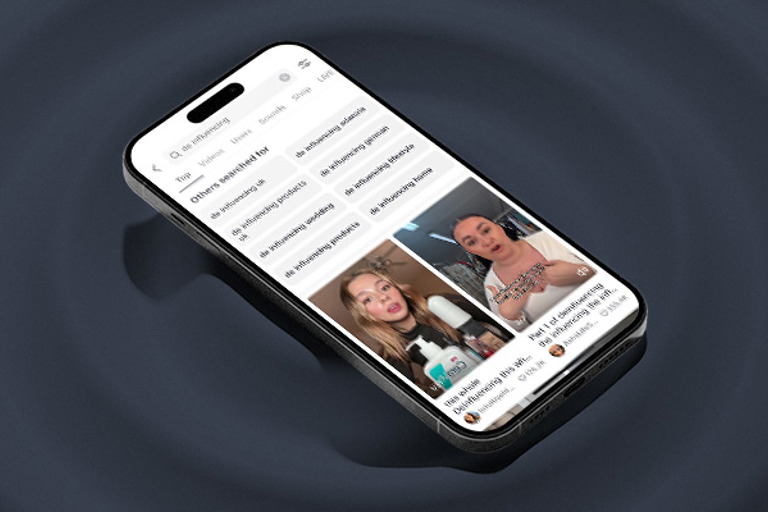
Deinfluencing puts brand transparency into the spotlight
Discover the growing trend of 'deinfluencing' and its impact on brand transparency. As consumers demand more honesty, social media influencers are using their platforms to discourage support for certain brands. Our Paid Media Executive Scott King explains how this movement highlights the need for greater responsibility and transparency from brands and creators.
Read more
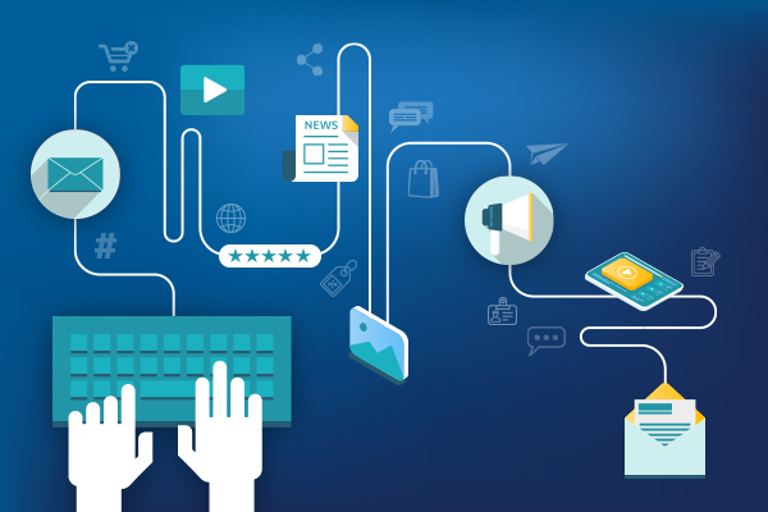
Email marketing and the SCARF model: An opportunity for 2023
Good newsletters and email content = more opportunities to stay top of mind in a way that’s influential over the long term. Senior Marketing Strategist Helen Davidson explores the brand-building opportunity of email when considered as part of the behavioural science checklist, the SCARF model.
Read more
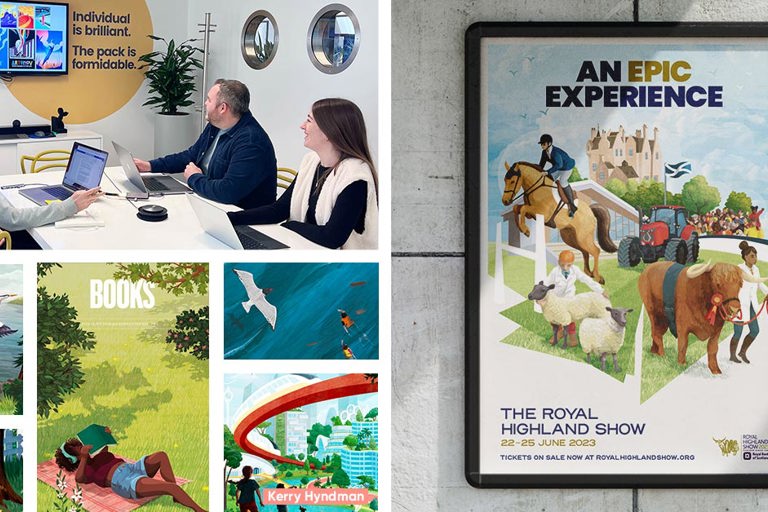
Creating an Epic Campaign for The Royal Highland Show 2023
In this article, we’d like to share with you the process we took in creating The Royal highland Show's 2023 campaign and the joy it brought us working with a freelance illustrator to activate our vision.
Read more


